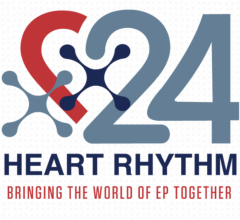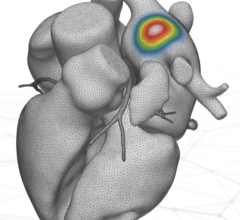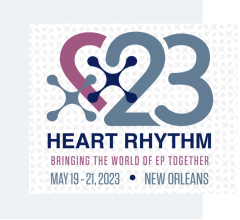
Non-invasive arrhythmia technology maps using only the data from a 12 lead ECG. (Graphic: Business Wire)
April 29, 2022 – Vektor Medical has announced positive results from its “Vektor vMap Clinical Validation Study” evaluating the accuracy of cardiac mapping with vMap. The study achieved statistically significant results of 98.7% in accurately identifying the regional arrhythmia source location for premature ventricular complex (PVC) and ventricular tachycardia (VT), 96.9% in accurately identifying the regional arrhythmia source for the arrhythmias and pacing types studied, and 97.3% segment mapping accuracy in all nine arrhythmia and pacing types included.
vMap is an FDA cleared, proprietary computational mapping system that identifies potential arrhythmia source locations anywhere in the heart using only 12-lead electrocardiogram (ECG) data. vMap is indicated to assist physicians in non-invasively identify these source locations in just minutes. Results from the study will be presented at Heart Rhythm 2022 on April 29, 2022.
“These results represent an exciting development in cardiac arrhythmia care and a significant step forward for the EP community in being able to better understand where arrhythmia sources are located,” said Dr. David Krummen, Professor of Medicine at University of California San Diego, co-founder and inventor for Vektor Medical. “vMap offers physicians the opportunity to provide higher quality of care for patients by improving first pass ablation success, lowering risks from invasive mapping and fluoroscopy exposure, and reducing procedure times, all while fitting into the clinical workflow.”
Highlights of the vMap Clinical Validation Study
The study results exceeded the pre-specified accuracy goals for arrhythmia source and pacing site localization, demonstrating vMap’s reliability as an accurate, non-invasive cardiac mapping tool. The results show:
- Regional accuracy for VT and PVCs in patients without significant structural disease (primary endpoint) was 98.7% (95% Cl: 96.0% -100%, p<0.0001)
- Regional accuracy for all episodes (secondary endpoint one) was 96.9% (95% Cl: 94.7%-99.0%, p<0.001)
- Exact or neighboring segment accuracy for all episodes (secondary endpoint two) was 97.3% (95% Cl: 95.2%-99.3%, p<0.001)
- Median center-to-center spatial accuracy was 15 mm
- The mapping process was completed in a median of 0.8 minutes
“This blinded study was intentionally designed with challenging pre-specified endpoints to test the accuracy and efficiency of vMap,” said Mike Monko, CEO of Vektor Medical. “We are delighted with the study results as they demonstrate the potential for the technology to improve ablation outcomes and arrhythmia care for millions of patients.”
vMap was invented by physicians and engineers from UCSD. vMap is intended as an informational tool for use by the physician. Only a physician can diagnose an arrhythmia.
vMap Clinical Validation Study Design
The vMap Clinical Validation Study was a blinded, multicenter evaluation with final data analysis performed by an independent core laboratory, the Cardiovascular Research Foundation (New York, NY). A total of 255 episodes from 225 patients from four study centers, including Medical University of South Carolina, University of California San Diego Health, VA San Diego Healthcare System, and Sutter Health (Mills Peninsula Medical Center) were enrolled. Eligible episodes included atrial and ventricular: tachycardia (VT), fibrillation, pacing, premature complexes (PACs and PVCs) and orthodromic atrioventricular reentrant tachycardia. Forward solution mapping system results were compared with the gold standard site of successful ablation or pacing during invasive electrophysiology study and ablation. Mapping time performance was assessed from timestamped analysis logs. Pre-specified performance goals were used for statistical comparisons. The study used existing data from successful ablation procedures to identify the arrhythmia source location, then sent the corresponding ECG to blinded electrophysiologists to validate vMap’s ability to identify the source location.
- Primary Endpoint - The accuracy of vMap in correctly identifying the regional arrhythmia source location for premature ventricular complex (PVC) and ventricular tachycardia (VT).
- Secondary Endpoints - Correctly identifying the regional arrhythmia source location across all arrhythmia and pacing types and the exact or neighboring segment for all episodes.
- Ancillary Endpoint - The mapping time performance through time stamped analysis logs.
Click here for more Heart Rhythm 2022 coverage.


 July 30, 2024
July 30, 2024 








